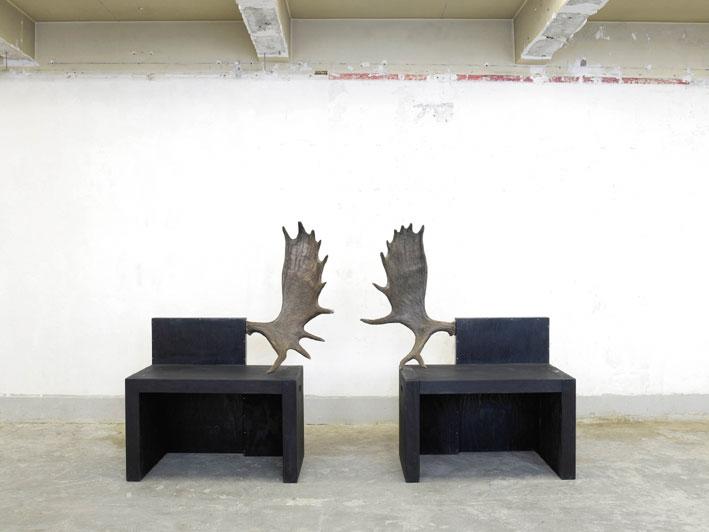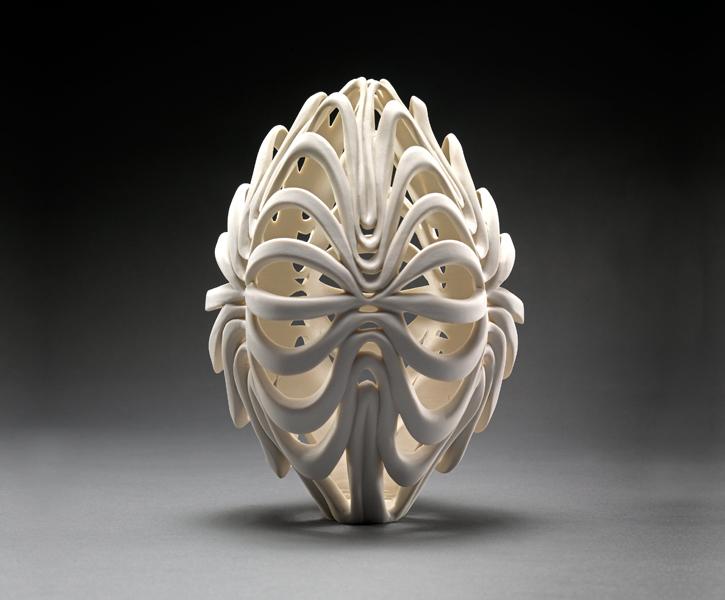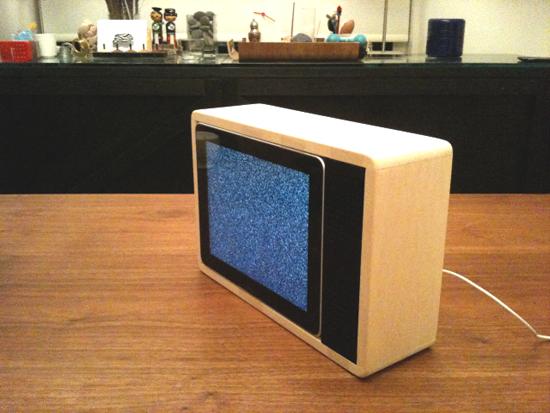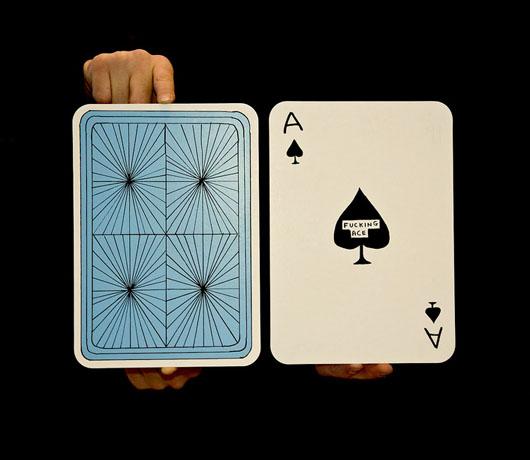
10.18.10
Sighted
MVM interviews David Shrigley
On occasion, the editors of Sight Unseen spot a story about creativity told from a viewpoint that’s not unlike our own. This interview recently took place between Magnus Voll Mathiassen — the Norwegian graphic designer formerly of Grandpeople, who now goes by MVM — and David Shrigley, the brittlely funny Glasgow-based artist and illustrator. It originally appeared on the website of Robot, an independent book, music, and clothing shop in Bergen, Norway, which has begun commissioning limited-edition totes, t-shirts, and prints by cultish illustrators including this pair (Shrigley’s Fucking Ace print is pictured above), plus Yokoland and Genevieve Gauckler. “A Robot feature is somewhere between an interview and an informal dialogue between two artists, authors, or musicians,” says owner Henrik Svanevik. “The artists are given each other’s email addresses and carte blanche. So I never know what the finished result will be, and the shape and form of the feature is completely up to the artists themselves. I think this is an interesting way of working, and I hope it will lead to an open and free dialogue between people.” We’ve excerpted the discussion between MVM and Shrigley — called “Why do you use a ruler?” — here, but to read the article in its entirety and see more images, click here. To pay a visit to Robot’s online shop, click here.
MVM: Let’s start. Why do you use a ruler in your work?
David Shrigley: Hi Magnus. Why do I use a ruler in my work?
Because:
A. I can’t draw a straight line without one.
B. I like straight lines.
and
C. I really like rulers. I have a collection of them.
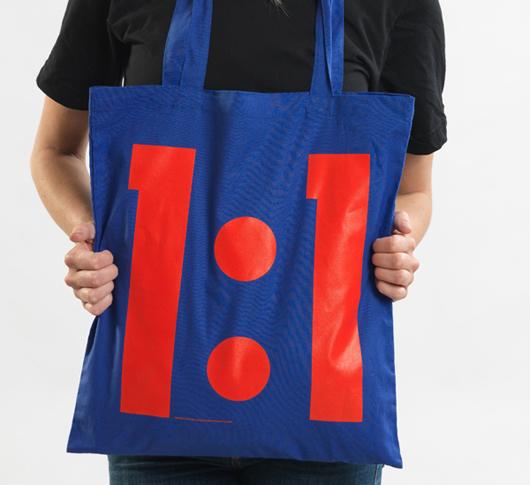
MVM’s 1:1 tote bag
MVM: Yes, rulers have some sort of strange aura to them. Unfortunately, I often break mine. Accidentally, though. So, a straightforward reason for the straight lines? The reason I asked is that you often take for granted that artists always try to strengthen the conceptual foundation of their artwork. That formal solutions seldom exist. I recently saw a Keith Haring documentary. I have to say I never cared much for his work in the past. In this documentary he said that the purpose of his work was to be repetitive and through this action turn his motifs into something different. It was probably plain branding, but there was something that made me start liking his work despite the aesthetics. Do you think your work functions in the same way? That the straight lines have a use beyond just keeping order to the individual pieces?
DS: I sometimes think of my work as always the same, but then at the same time always different. It’s the same aesthetic and maybe the same attitude, but (then) if there wasn’t something different in there, if there wasn’t some kind of surprise each time, I would probably stop doing it. I never really liked Keith Haring’s work that much. I’ve always thought it was a bit boring. Just because he did so much of it over and over again doesn’t make me think any differently about it. Maybe it’s his aesthetic that I don’t like. I guess Jean Michel Basquiat was also very repetitive, but I always liked his aesthetic so that makes it better.
MVM: Is Basquiat’s work something you can relate to?
DS: I liked Basquiat’s work when I first went to art school from 1987. I think he died in 1988. I guess I was into the crude aesthetic, primarily. In retrospect, I think the work seems very much of that era; that if it had been done during a recession it would probably all have been done/made on paper and not on giant canvases. His drawings on paper are the best I reckon. I was never really that into the content of his work. I think that was the thing that was missing in his work. Perhaps if he had lived longer he would have found more of a ‘voice’. His works on paper are really great, but I wouldn’t say he was among my favourite artists in the same way that Philip Guston is.
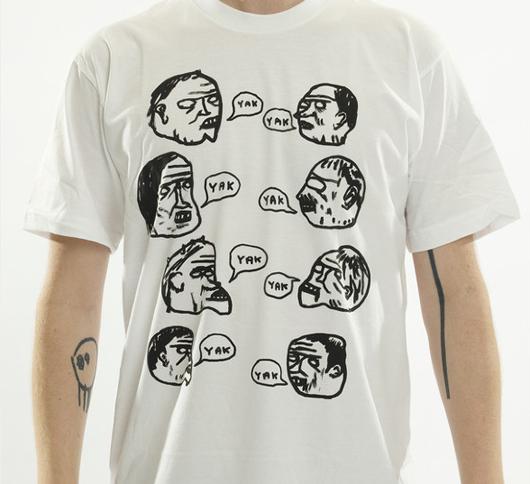
Shrigley’s Yak Yak Yak t-shirt
MVM: I think I had a similar taste in art when I started at art school. Basquiat’s work, and also that of Cy Twombly, really appealed to me. For some reason Guston’s work has had the opposite effect on me. I have always hated it. I don’t know why. Until some months ago. I saw a painting, and instantly loved it! This must have something to do with the the work I have been doing lately, I could somehow see it from a different angle. Have you had similar experiences? You probably have, and if so, have they changed your attitude to art or your own practice in any way? Funny you should mention Guston…
DS: I think Guston has become a very influential artist. I know a lot of artists apart from myself who are in love with that work, like Tal R for instance. Even though I quite like Cy Twombly, I am amazed that his work seems to have changed so little during the past four decades. If it was me I would probably have started doing something different in about 1975. But then I get bored easily. Art is a lot like music for me, in the way that I consume it: I often find something from the past and fall in love with it; or perhaps I find something contemporary, but I rarely love the whole of an artists oeuvre, in the same way that you can love The Velvet Underground but it’s hard to love everything that Lou Reed has done since.
MVM: I am quite differently put together, I think. I need the oeuvre, the whole output. But, on the other hand, I tend to throw what I like out the window after some years. Though, not yours. And the reason, I think, is that you portray, or depict, humanity in the only reasonable way. Somehow, the joy of laughing at mankind’s irrationality and grotesque behaviour feels cleansing. Not as a comparison, but two of my favorite British artists, the Chapman brothers, have the same effect on me. Not to go too deep into the matter, but do you have an agenda? (As a side note) Your work has gotten a lot of attention outside the art world and is being reproduced in various mainstream media. You are being represented in both mainstream and art contexts…
DS: I don’t have an agenda. I didn’t intend to be the kind of artist I am now. I don’t think I thought it was possible to be an artist at all, when I was at art school. The path I have taken has been quite accidental. I think I am lucky in that my work has some popular appeal but then is also taken seriously as fine art. Some people think that is a problem for a fine artist, but I think it’s a good thing, as more people get to see my work. I think my only ambition as an artist is just to keep being an artist. As long as I don’t have to have a job then I’m happy.
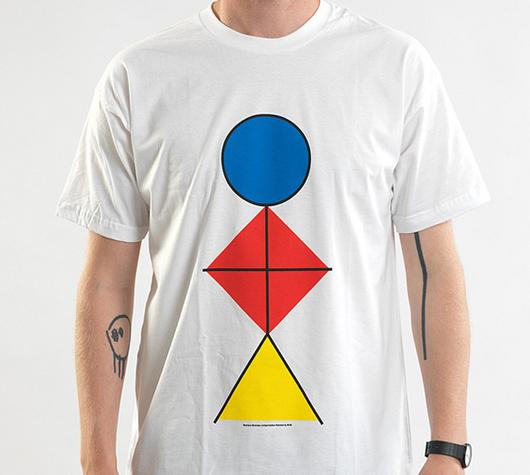
MVM’s Bauhaus Stickman t-shirt
MVM: As an established artist, is your future path fixed or will it continue to be accidental? My experience is that ambitions tend to have a relation with strategies and methods if you want to succeed in the art world as in any other profession? That sounded very white collar… and cynical, by the way…
DS: Well, I suppose I am ambitious, as far as my work is concerned; I want it to be good, but I’m not really sure what it’s going to be. I don’t look too far into the future. I am only able to think about the projects that I have currently committed to. As long as I make good art, and don’t make art that’s crap, then I will be happy. I guess that’s kind of ambitious, isn’t it?
Click here to read the rest of the story on Robot’s website.
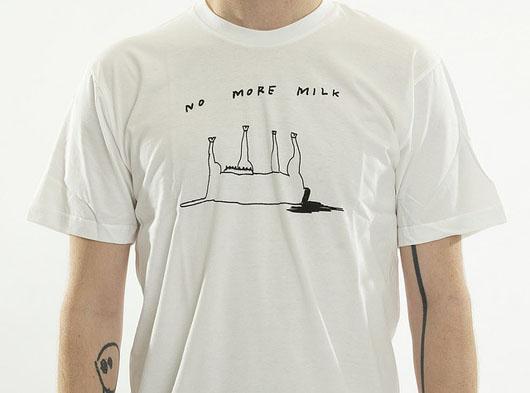
Shrigley’s No More Milk t-shirt
